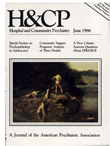Adolescent Drug Abuse
Abstract
The author reviews general principles for assessing, intervening in, and treating adolescent drug abuse. Assessment involves uncovering the extent of the drug problem and the reasons behind it, including the role of family psychodynamics. In the intervention phase, the clinician should clearly explain the diagnosis to the family and firmly recommend further actions, being prepared to encounter resistance. Treatment should enable the adolescent to become free of acute drug effects, understand the disorder, and become physically and emotionally capable of abstinence. Involvement in mutual self-help groups modeled after Akoholics Anonymous is helpful in achieving longterm abstinence. The author also discusses trends in adolescent drug abuse, treatment of medical and psychiatric complications of drug use, and strategies for bandling violent drug abusers.
Access content
To read the fulltext, please use one of the options below to sign in or purchase access.- Personal login
- Institutional Login
- Sign in via OpenAthens
- Register for access
-
Please login/register if you wish to pair your device and check access availability.
Not a subscriber?
PsychiatryOnline subscription options offer access to the DSM-5 library, books, journals, CME, and patient resources. This all-in-one virtual library provides psychiatrists and mental health professionals with key resources for diagnosis, treatment, research, and professional development.
Need more help? PsychiatryOnline Customer Service may be reached by emailing [email protected] or by calling 800-368-5777 (in the U.S.) or 703-907-7322 (outside the U.S.).



